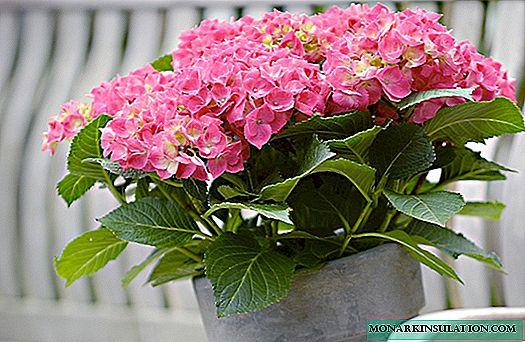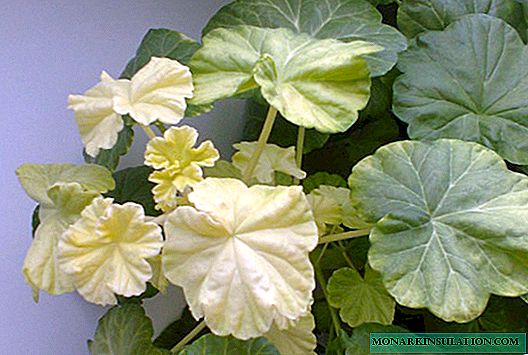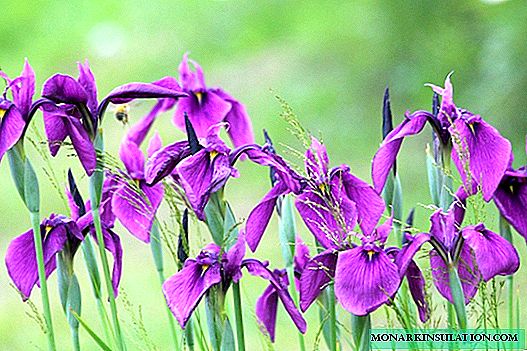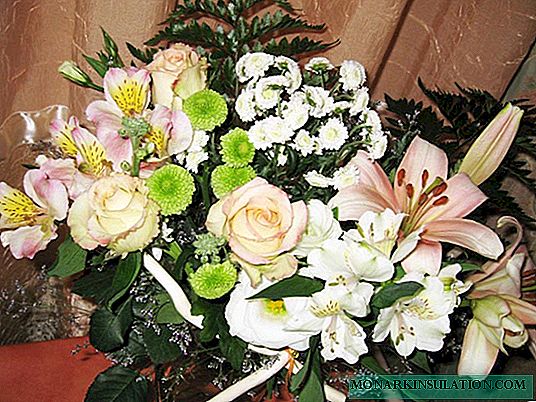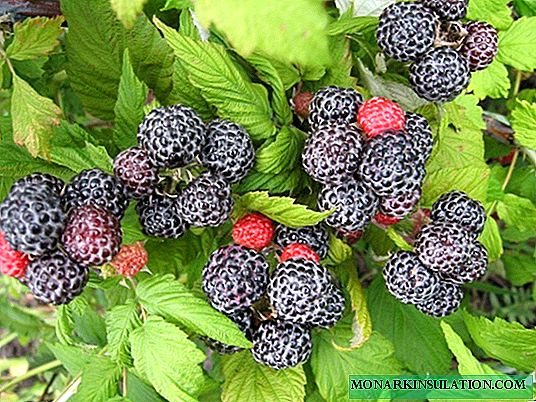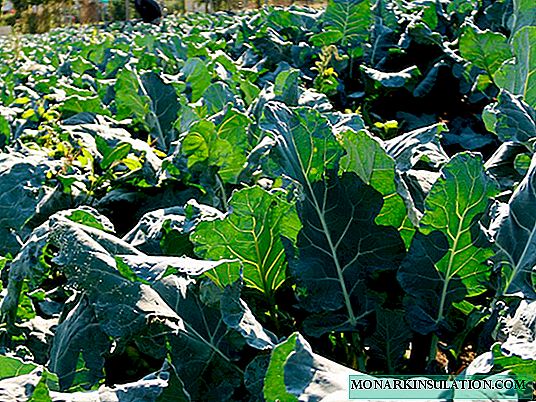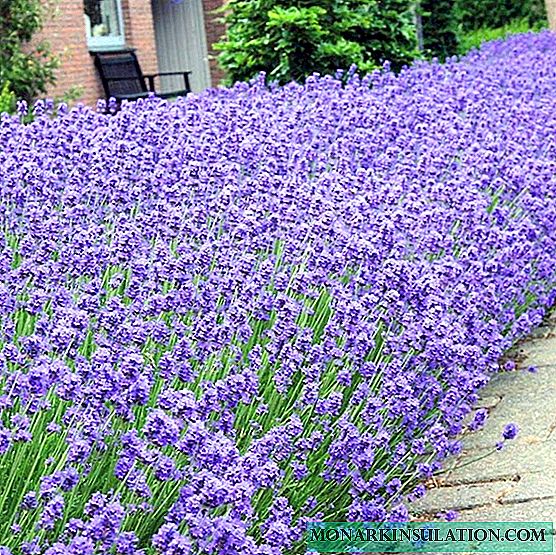Primrose (Primrose) is a genus of perennial herbaceous flowering plants of the Primrose family. The distribution range of the temperate climate zone in Europe, Asia, North America, China, prefers moist soil near the water.
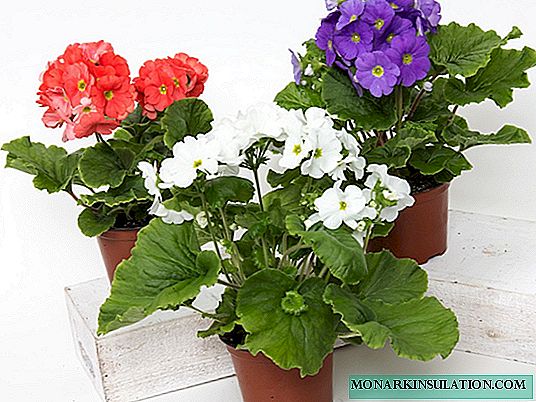
The name is translated from Latin as the first, primrose. This is no coincidence, as he is one of the first to bloom and is considered a harbinger of spring.
Description of Primrose
It grows from 10 to 25 cm. The leaves are dark green rounded, wrinkled, fleecy, collected in a basal rosette. The flowers are regular five-petalled, of different shades, located on a small peduncle. Depending on the species, solitary or collected in inflorescences.
Types of primrose for home breeding
A variety of varieties of primrose is divided into garden and indoor. Although the former can be grown as home.

The following varieties are popular for keeping on the windowsill:
| Grade | Description | Leaves | Flowers Inflorescence The period of their dissolution |
| Obconica (Reverse Conical) | Height - 20 cm. May cause allergies when touching parts of the plant. | Elliptical with serrated serrated edges. | Lavender, blue, red, salmon, purple, pink (7 cm). They smell good. Umbrella. Year-round (with good care). |
Soft leaved (malakoid) | Grows to 30 cm. | Elongated light green indented along the edge, the base in the form of a heart. | White, lilac, blue, scarlet, pink, two-color terry (4 cm). Panicled. February-March, lasts 3-5 months. |
| Stemless | Does not exceed 20 cm. | Long emerald, in the middle a bright vein. The surface is wrinkled. | Pale yellow, but there may be other shades, single (2-4 cm). April - July. |
Home primrose care at home
If you properly maintain the plant, you can achieve from it year-round flowering.
| Parameter | Conditions | |
| During flowering | After flowering | |
| Location / Lighting | West or northwest window. | Cool place. Does not tolerate direct sun, shade. |
| Keep in a cool room, but without drafts. | ||
| Temperature | + 12 ... +15 ° C. At higher values, the buds fall. | + 15 ... +18 ° C. |
| Watering | Moisturize slightly. | When the top layer dries. |
| Use soft water at room temperature. Do not allow waterlogging. They bring it in from below or along the edge, without falling on the foliage. | ||
| Humidity | 60-70%. Do not spray, put in a pan with wet expanded clay, moisten around the flower. | |
| Top dressing | 1 time 2 weeks with complex mineral fertilizers for flowering (0.5 dose). | Not necessary. |
| The soil | Peat, leaf, turf, sand in equal proportions. | |
Transfer
Transplanted primrose every year in the autumn period (October) to stimulate flowering.
Adult plant - after 2-3 years.
- The pot is chosen wide shallow, more than the previous one by no more than 1.5 cm.
- Drainage (pebbles, broken ceramics) must be laid out at the bottom.
- The process is carried out carefully by transshipment to prevent damage to the root system.
- The socket is not deepened, left on the surface.
Breeding
New plants are obtained by seed and dividing the bush.
Seeds
Sowing of planting material is carried out in July:
- Take a wide shallow capacity, pour peat and sand in equal amounts.
- Distribute them on the surface without deepening, sprinkle lightly with a substrate.
- Cover with glass or film.
- Keep temperature + 16 ... +18 ° C. Moisturize periodically.
- After the emergence of seedlings and their sufficient rooting (1.5 months) are planted.
Bush division
When transplanting primrose over 3 years old in the fall, the following manipulations are performed:
- They clean the roots by gently brushing off the soil from them.
- Young shoots with a growth point are separated from the root system.
- The mother plant is planted in a prepared pot, and the children are placed in wet sand and covered with a film.
- When outlets appear, they are seated in separate containers.
Diseases and pests of primrose
In case of errors in care: improper lighting, sharp temperature changes, excess or lack of moisture, a home beauty may get sick. It is necessary to notice and take action in time.
| External manifestations on leaves and other parts of the plant | Cause | Repair methods |
| Yellowing. |
|
|
| Falling colors. |
| Observe the conditions of detention. |
| Gray plaque. Softening, become wet. |
|
|
Web. Blanching, yellowing and drying. | Spider mite. |
|
| The appearance of stickiness. Twisting, yellowing. | Aphid. |
|
Mr. Summer resident recommends: primrose - an assistant for vitamin deficiency
Primrose is appreciated not only for its beauty, but also for its healing properties. Its foliage contains large amounts of ascorbic acid and carotene. Roots - glycosides, saponins, essential oils. It can make up for the lack of vitamins in the spring. Sheets are used for the preparation of salads, soups, main dishes. With their help heal wounds, cuts.
Other properties of primrose:
- painkiller (rheumatism, migraine, headaches);
- diuretic (bladder, kidneys);
- expectorant (bronchitis, laryngitis, pneumonia, whooping cough);
- sedative (insomnia, neurosis).
Infusion of leaves and flowers of primrose - a drink of vigor and health.


